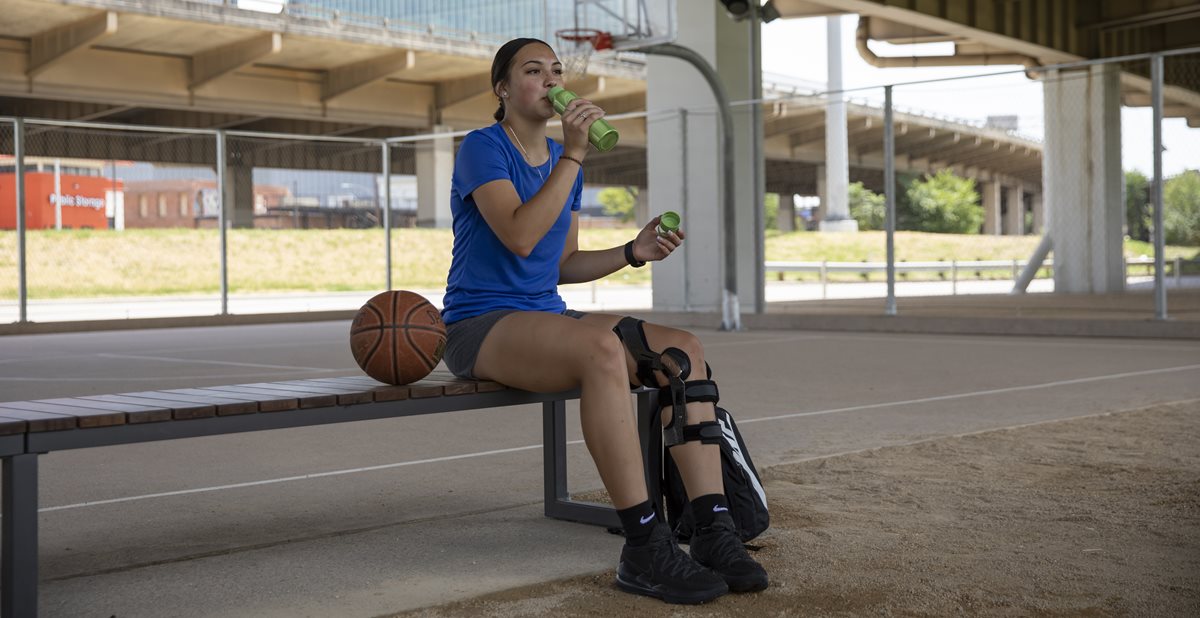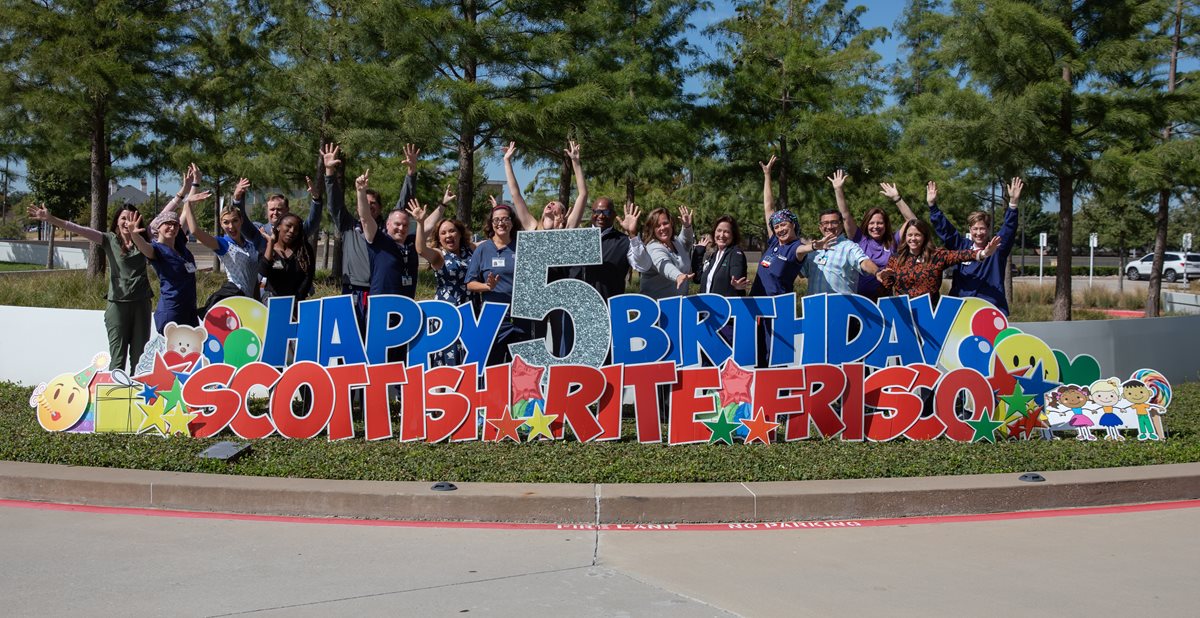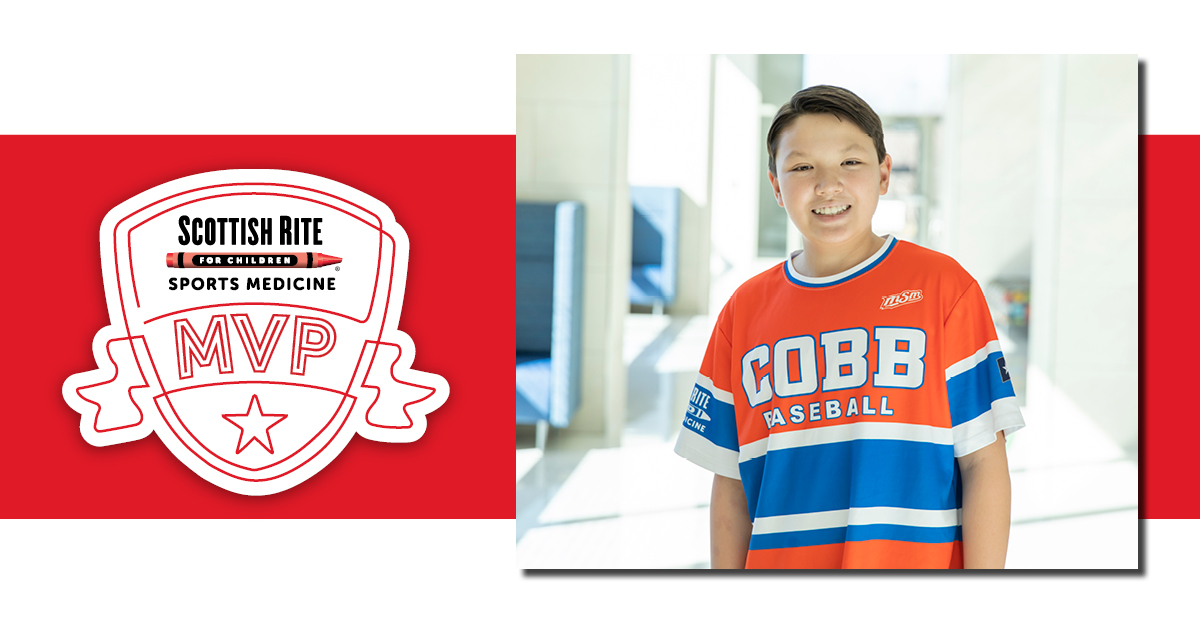
May 26, 2022 / Sports Medicine
Don’t blink, this MVP is going to pass you by in a flash!
You won’t find too many middle schoolers at a gym at 6 a.m, but Harrison says, “That’s my favorite class! I’m kind of a morning guy. It wakes me up and gets me ready for the day.” Harrison, of Frisco, just turned 12, but he discovered the Bridge Program more than a year ago, and he has so many good things to say about it. Harrison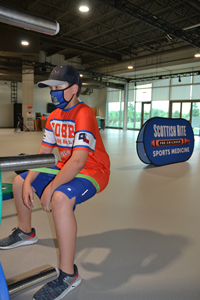 describes the group sessions as “amazing and fun, and hard, but everyone is helpful and helps you acclimate.”
describes the group sessions as “amazing and fun, and hard, but everyone is helpful and helps you acclimate.”
A multi-sport athlete, Harrison has learned to appreciate the benefits of learning proper form before building strength and speed, currently his primary motivation for training. His history with Scottish Rite includes care for lateral epicondylitis of his throwing elbow and, later, a tibial tubercle traction injury in his left knee. Scottish Rite for Children sports medicine physician Jane S. Chung, M.D., says, “these are not the most common injuries in this age group.”
It was a good thing he came to a pediatric musculoskeletal specialist. She recommended time out of sports and formal physical therapy to guide rehabilitation throughout his recovery for both injuries. Stephanie, Harrison’s mom, says, “This is a full-service operation, and everyone has been so friendly and so incredibly helpful.”
Harrison has always worked so hard and was dedicated to recovery after each of his injuries. He’s got a great attitude and excellent work ethic, which is a crucial component to an athlete’s recovery from injury. It was a pleasure working with him and his family as we came up with specific plans to help him recover from each of his injuries.”
Jane S. Chung, M.D.
Once he recovered from each of these injuries, he was advised to transition into our Bridge Program. When asked what keeps them coming back, Stephanie listed several program benefits including: the small group size, age-appropriate guidance, flexible schedule and session options that don’t conflict with practice.
Learn more about Harrison’s Injuries
Lateral epicondylitis is an overuse injury that causes pain on the outside bump of the elbow. This injury can be seen in tennis players and throwing athletes who have a high volume or high intensity of training without appropriate rest.
Tibial tubercle traction injury is a traumatic injury that occurs at the bump on the front of the lower leg near the knee. The patellar tendon, very strong tissue that connects the knee cap (patella) to the lower leg, attaches in this area. In growing children this area has weaker cells called cartilage that are vulnerable to injury. Forceful traction, or pulling, on this tendon can cause a painful injury and require treatment. Harrison wore a brace to immobilize his knee for four weeks while this area healed.
Learn about other knee injuries in young athletes.
Though he’s given up ice hockey for now, Harrison will play football in the fall and is seriously focused on preparing for high school baseball tryouts in a couple of years. This first baseman has impressed our team with his attitude and commitment to improve his performance. “If Harrison says he’ll be there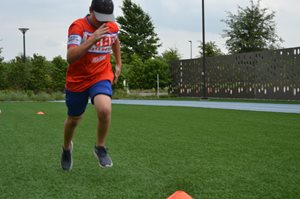 , you better believe he’ll be there,” Bridge program coordinator, Matt Schiotz, CSCS, says.
, you better believe he’ll be there,” Bridge program coordinator, Matt Schiotz, CSCS, says.
When Harrison started in our Bridge Program, he hadn’t received any training on proper movement patterns. His training has progressed, and Harrison and his coach Schiotz agree he is much stronger. Most importantly, Schiotz says he has developed awareness and control of his body that prepares him to perform explosive movements required in baseball and football with a lower risk of injury.
This M.V.P. is a star student in Schiotz’s eyes. It won’t take long for other athletes to look at him in awe. That is, if he slows down enough for them to see him.
 describes the group sessions as “amazing and fun, and hard, but everyone is helpful and helps you acclimate.”
describes the group sessions as “amazing and fun, and hard, but everyone is helpful and helps you acclimate.”
A multi-sport athlete, Harrison has learned to appreciate the benefits of learning proper form before building strength and speed, currently his primary motivation for training. His history with Scottish Rite includes care for lateral epicondylitis of his throwing elbow and, later, a tibial tubercle traction injury in his left knee. Scottish Rite for Children sports medicine physician Jane S. Chung, M.D., says, “these are not the most common injuries in this age group.”
It was a good thing he came to a pediatric musculoskeletal specialist. She recommended time out of sports and formal physical therapy to guide rehabilitation throughout his recovery for both injuries. Stephanie, Harrison’s mom, says, “This is a full-service operation, and everyone has been so friendly and so incredibly helpful.”
Harrison has always worked so hard and was dedicated to recovery after each of his injuries. He’s got a great attitude and excellent work ethic, which is a crucial component to an athlete’s recovery from injury. It was a pleasure working with him and his family as we came up with specific plans to help him recover from each of his injuries.”
Jane S. Chung, M.D.
Once he recovered from each of these injuries, he was advised to transition into our Bridge Program. When asked what keeps them coming back, Stephanie listed several program benefits including: the small group size, age-appropriate guidance, flexible schedule and session options that don’t conflict with practice.
Learn more about Harrison’s Injuries
Lateral epicondylitis is an overuse injury that causes pain on the outside bump of the elbow. This injury can be seen in tennis players and throwing athletes who have a high volume or high intensity of training without appropriate rest.
Tibial tubercle traction injury is a traumatic injury that occurs at the bump on the front of the lower leg near the knee. The patellar tendon, very strong tissue that connects the knee cap (patella) to the lower leg, attaches in this area. In growing children this area has weaker cells called cartilage that are vulnerable to injury. Forceful traction, or pulling, on this tendon can cause a painful injury and require treatment. Harrison wore a brace to immobilize his knee for four weeks while this area healed.
Learn about other knee injuries in young athletes.
Though he’s given up ice hockey for now, Harrison will play football in the fall and is seriously focused on preparing for high school baseball tryouts in a couple of years. This first baseman has impressed our team with his attitude and commitment to improve his performance. “If Harrison says he’ll be there
When Harrison started in our Bridge Program, he hadn’t received any training on proper movement patterns. His training has progressed, and Harrison and his coach Schiotz agree he is much stronger. Most importantly, Schiotz says he has developed awareness and control of his body that prepares him to perform explosive movements required in baseball and football with a lower risk of injury.
This M.V.P. is a star student in Schiotz’s eyes. It won’t take long for other athletes to look at him in awe. That is, if he slows down enough for them to see him.

